Arroz con maíz (rice with corn), also known as moro de maíz and Locrio de maíz, is a delicious combination of sweet corn and the most flavorful rice. It is one of our most popular rice dishes, and it's easy to make and a very versatile side dish.

Why we ❤️ it
Arroz con maíz, moro de maíz or locrio de maíz (rice with corn) is a flavorful sweet corn pilaf, and one of the most popular Dominican rice side dishes. But if you think it is just adding sweet corn to white rice, you're missing out on a huge opportunity here.
Done right, this rice can have a deeper, richer flavor, enhanced by the gentle sweetness of sweet corn.
Versions
The simplest version of this corn and rice recipe you'll find out there is just corn added to a pot of white rice while it cooks. Just white rice with corn. Perhaps some herbs are thrown in for garnish.
Other recipes call for more seasonings and ingredients to add more flavor to it [1]. The latter is my preference.
Another way to make this (though I didn't, to keep it a vegan-friendly recipe) is to fry chopped tocineta (bacon) and use the fat it releases instead of oil, leaving the tocineta to keep cooking alongside the rice. This appeared in one of the oldest Dominican cookbooks [1] I own.
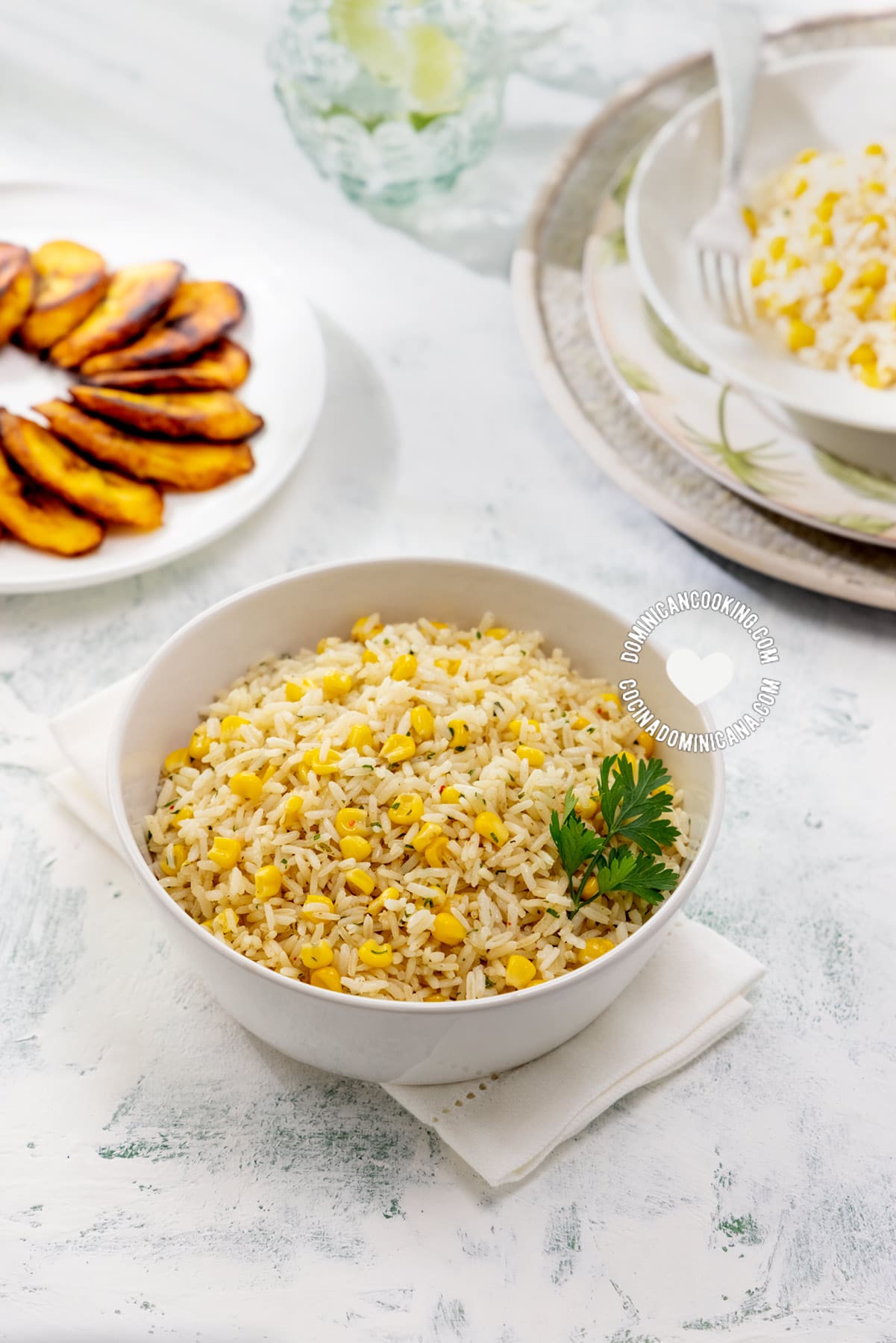
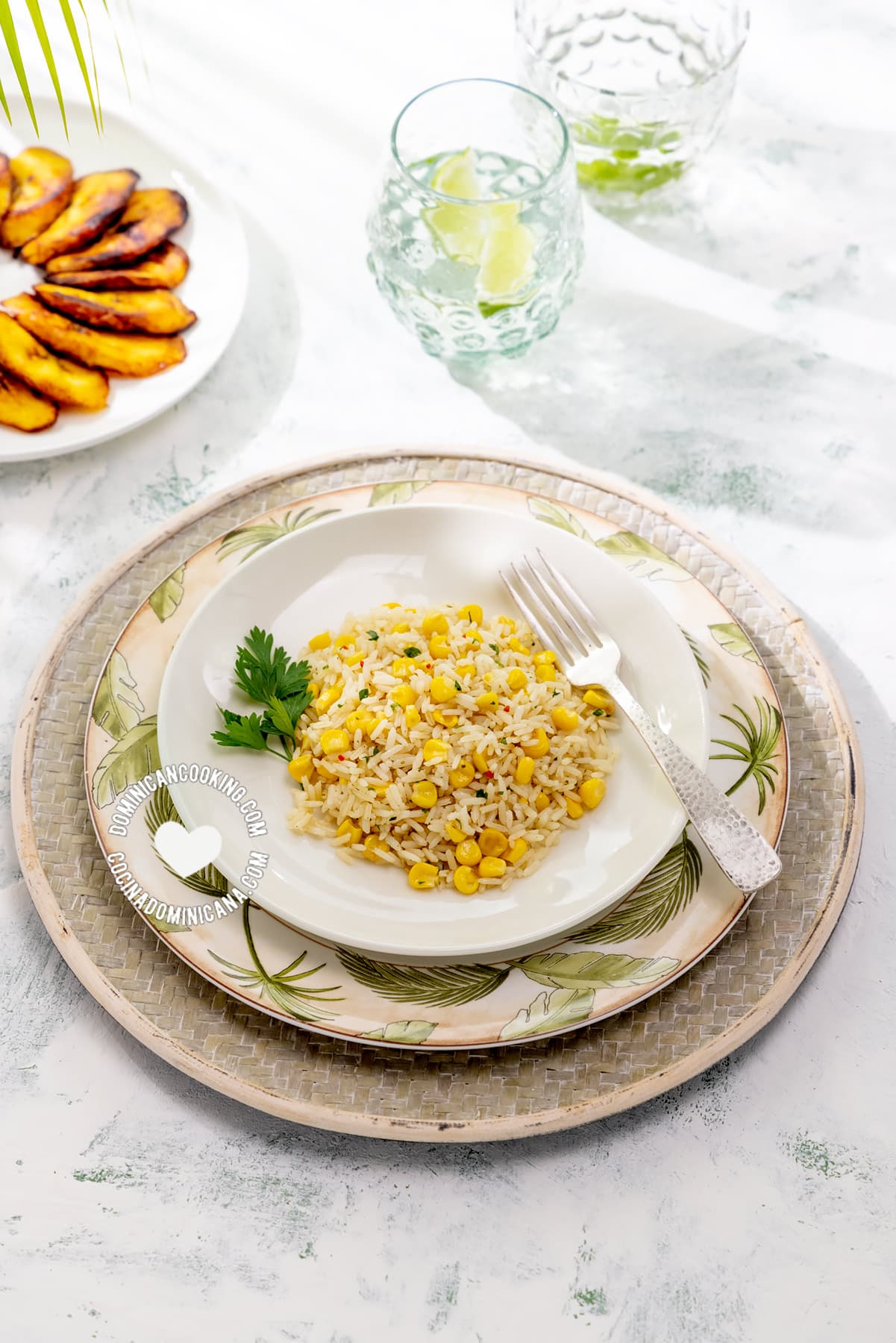
Arroz con maíz or moro de maíz
Serving suggestions
This rice dish makes a very tasty concón, so serve it alongside as a special treat. Rice with corn goes excellent with Pollo guisado, Res guisada and Cerdo guisado (braised chicken, beef and pork). For a meatless version, I recommend Berenjena asada (roasted eggplants), and for a vegan version, serve with Repollo guisado (stewed cabbage).
As you can see in the photos, aside from some meat dishes, we also love it with Fritos maduros (fried sweet plantains), and I also recommend some Arepitas de maíz (cornmeal fritters).
About this recipe
I use vegetable broth to add extra flavor, which you can make with our easy recipe or buy. You do not need to be limited by this; experiment and add other ingredients and herbs that you love too, but most importantly, don't just make white rice and add corn to it. But if you do not want to use broth, just use an identical amount of boiling-hot water that you will salt to taste once added to the rice.

Recipe
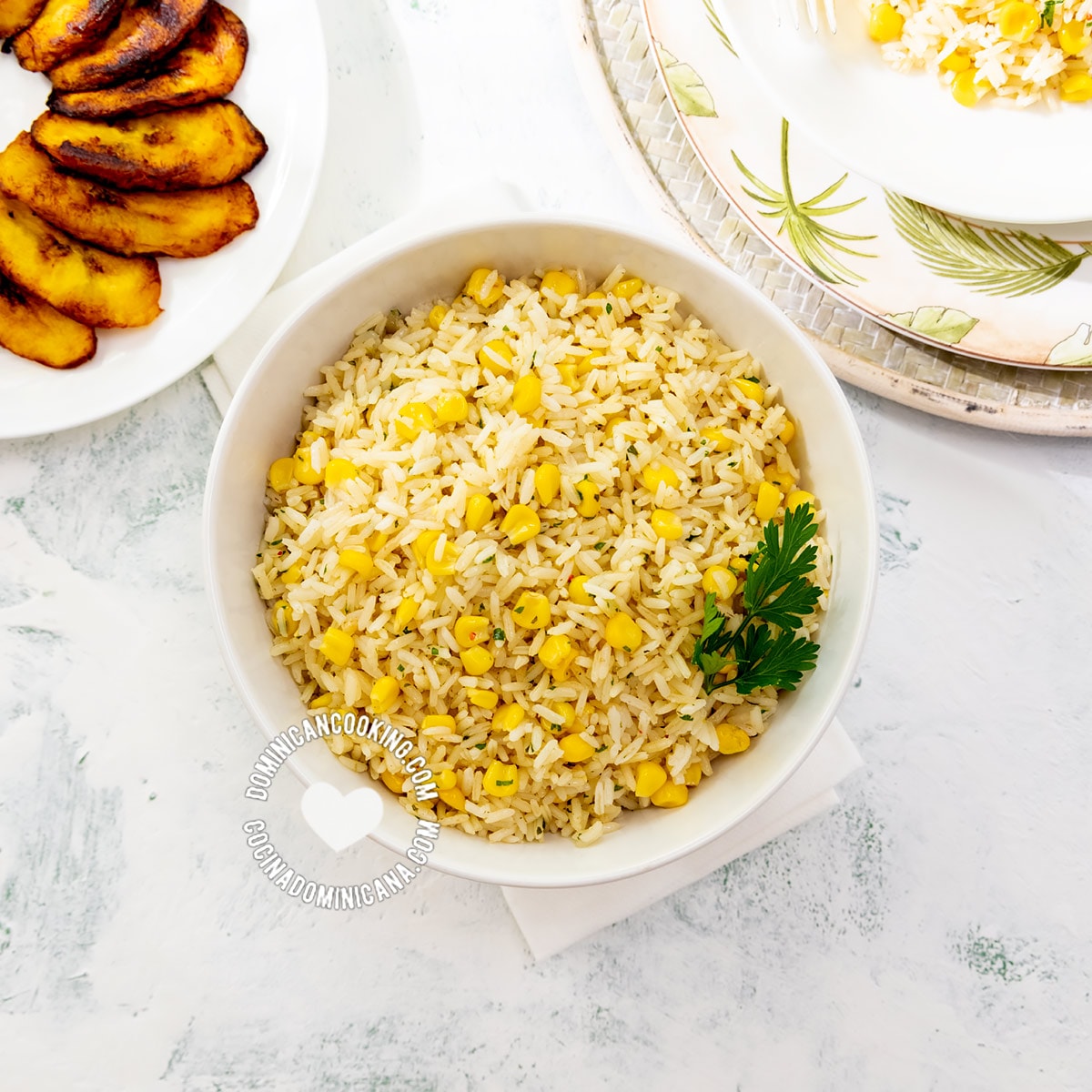
[Recipe + Video] Moro or Arroz con Maíz (Rice with Corn)
Equipment
- Thick bottom, 1.5 gal [5.5 liters] capacity pot
Ingredients
- 5 tablespoons olive oil, divided
- 1 large red onion, minced
- 2 cup sweet corn, (boiled soft, from frozen, or canned)
- 2 cup rice, (long grain, Carolina)
- 3 cup vegetable broth, salted to taste, boiling-hot (see notes)
- 3 tablespoons minced parsley
Instructions
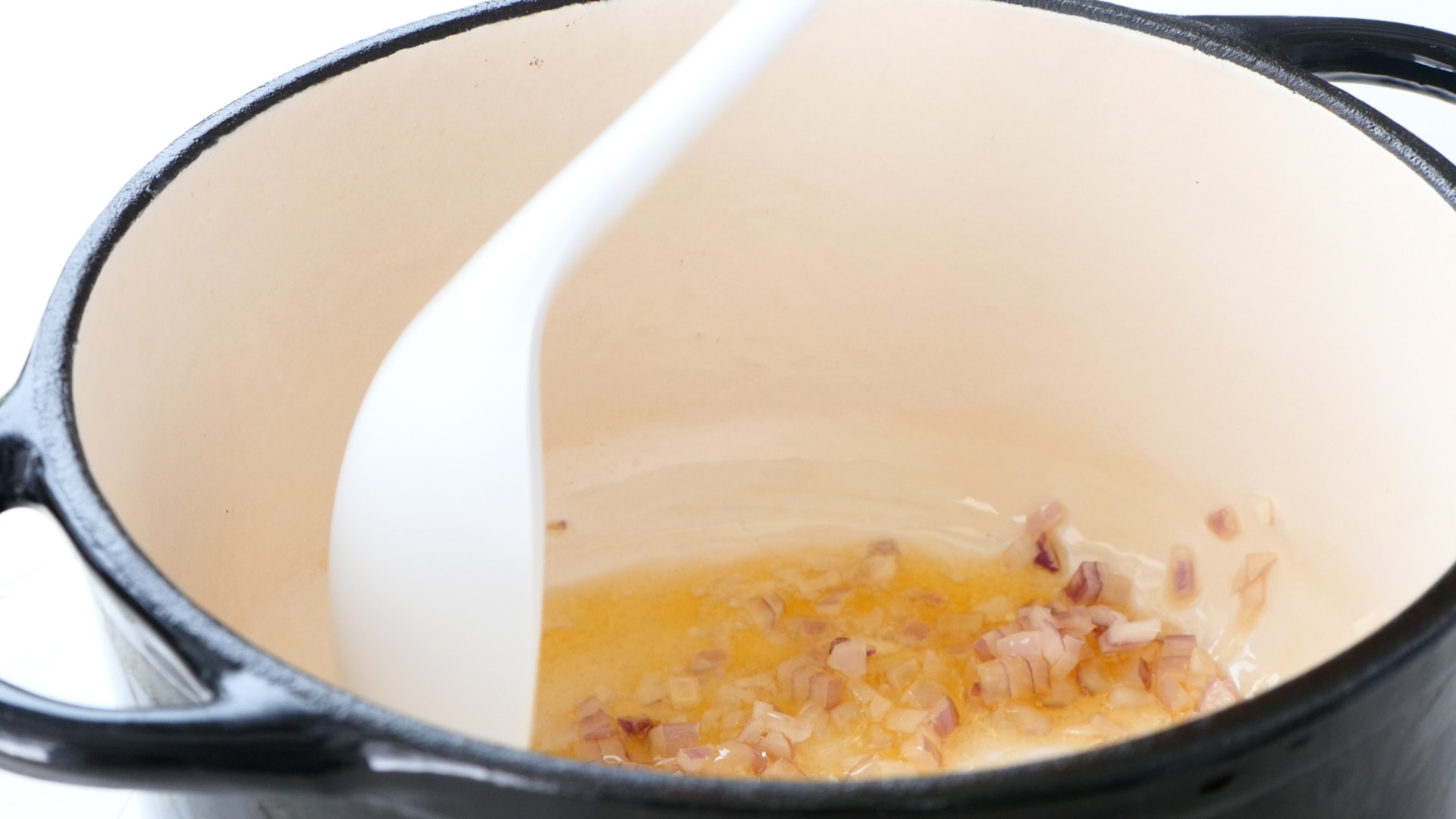 Heat 3 tablespoons of oil in the pot over medium heat. Add the onions and cook stirring the onions until they become translucent.
Heat 3 tablespoons of oil in the pot over medium heat. Add the onions and cook stirring the onions until they become translucent.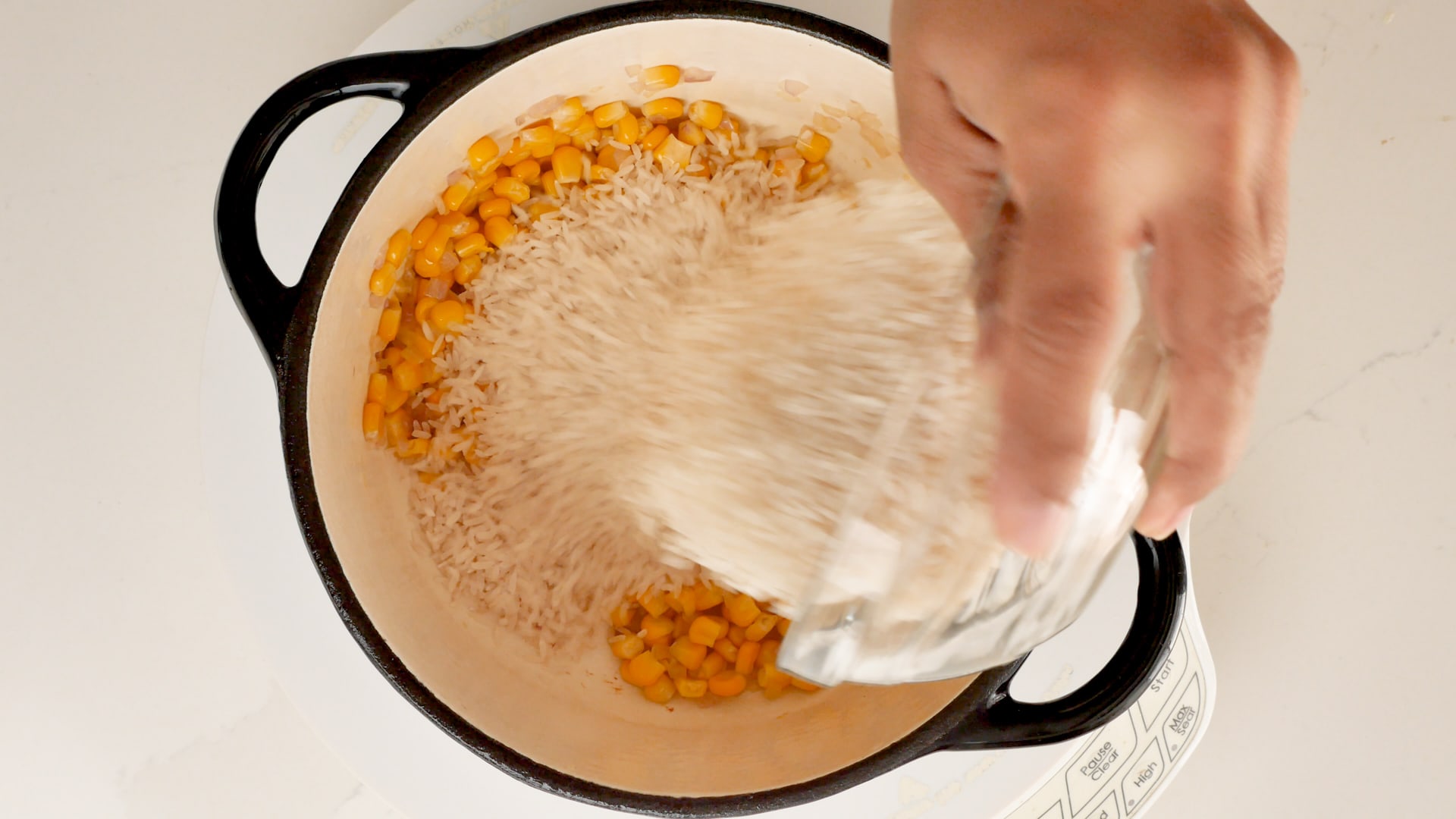 Once the onions have become translucent, add the corn, and cook stirring to heat it through. Stir in the rice, making sure it's all covered in a light oil film. This will help fix the starch and produce rice that is not too sticky (graneado).
Once the onions have become translucent, add the corn, and cook stirring to heat it through. Stir in the rice, making sure it's all covered in a light oil film. This will help fix the starch and produce rice that is not too sticky (graneado).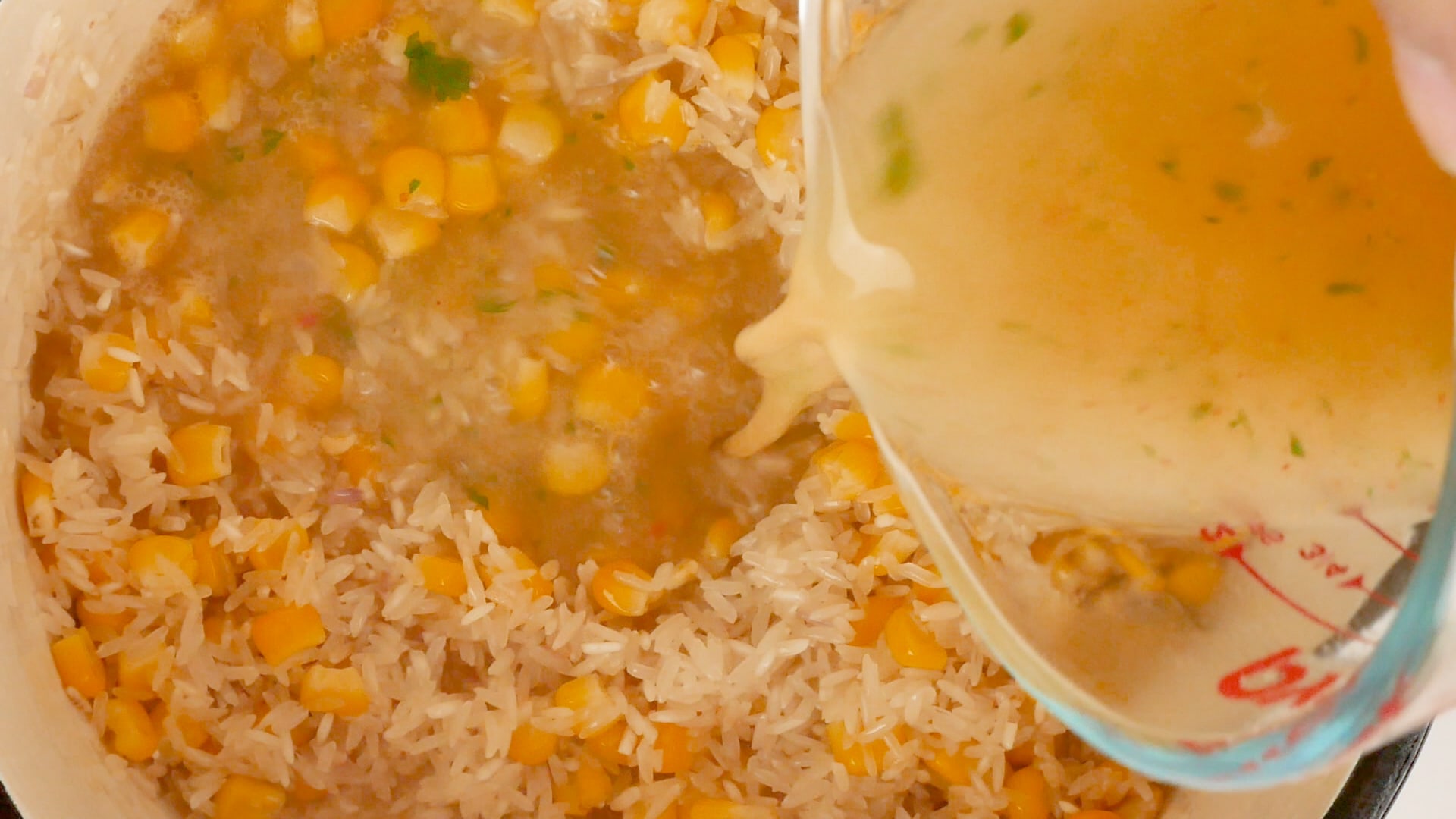 Pour in the vegetable broth and stir the rice.
Pour in the vegetable broth and stir the rice.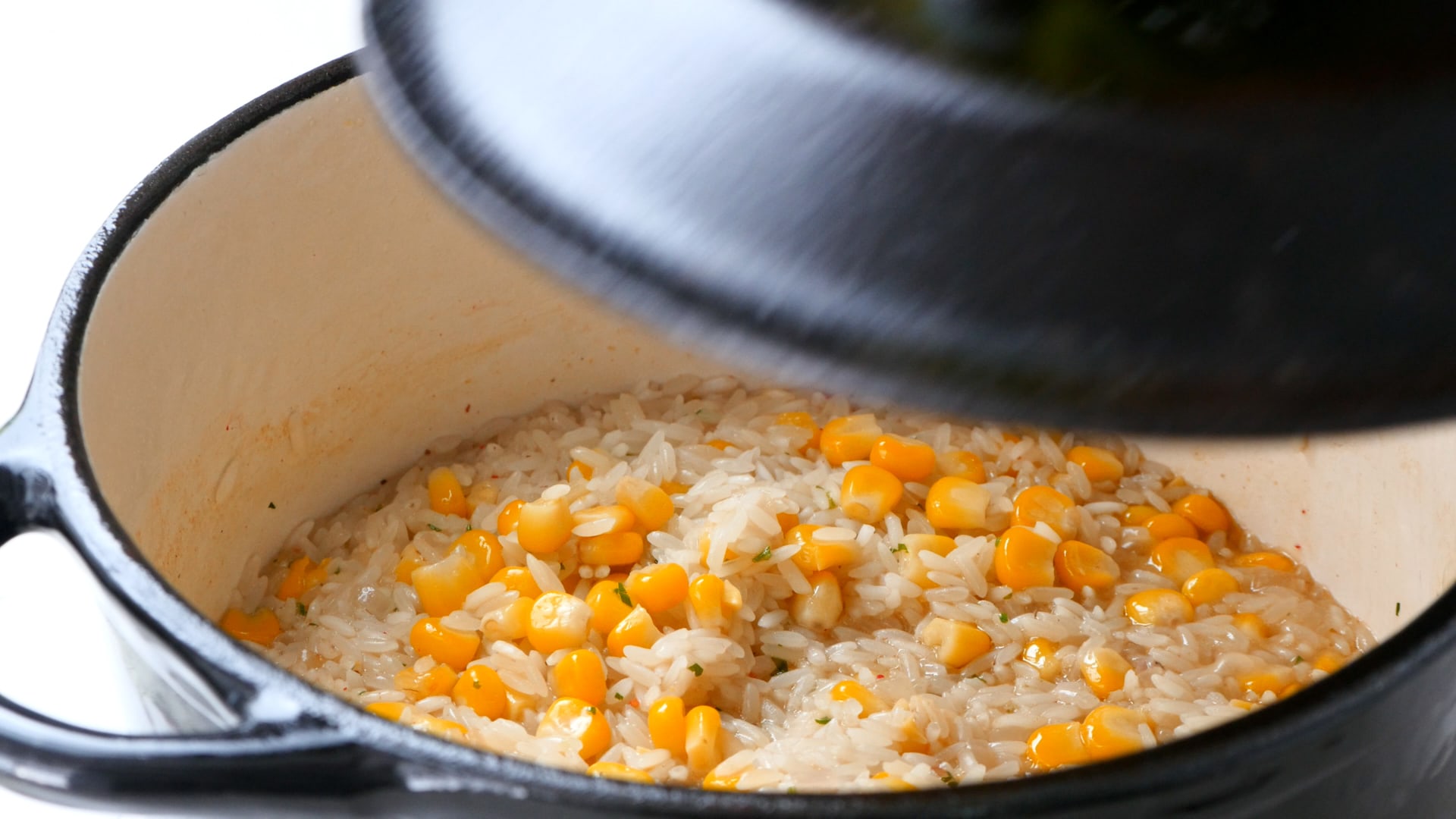 Simmer uncovered, and stir regularly to avoid excessive sticking, always scraping as much of the rice at the bottom as possible.When almost all the liquid has evaporated cover with a tight-fitting lid and simmer over low heat for 10 minutes.Uncover and stir, moving the rice from the bottom to the top. Cover again and cook for 10 more minutes. Try the rice, it should be firm but cooked through (see notes). If necessary, cover and simmer for another 5 minutes over very low heat.
Simmer uncovered, and stir regularly to avoid excessive sticking, always scraping as much of the rice at the bottom as possible.When almost all the liquid has evaporated cover with a tight-fitting lid and simmer over low heat for 10 minutes.Uncover and stir, moving the rice from the bottom to the top. Cover again and cook for 10 more minutes. Try the rice, it should be firm but cooked through (see notes). If necessary, cover and simmer for another 5 minutes over very low heat.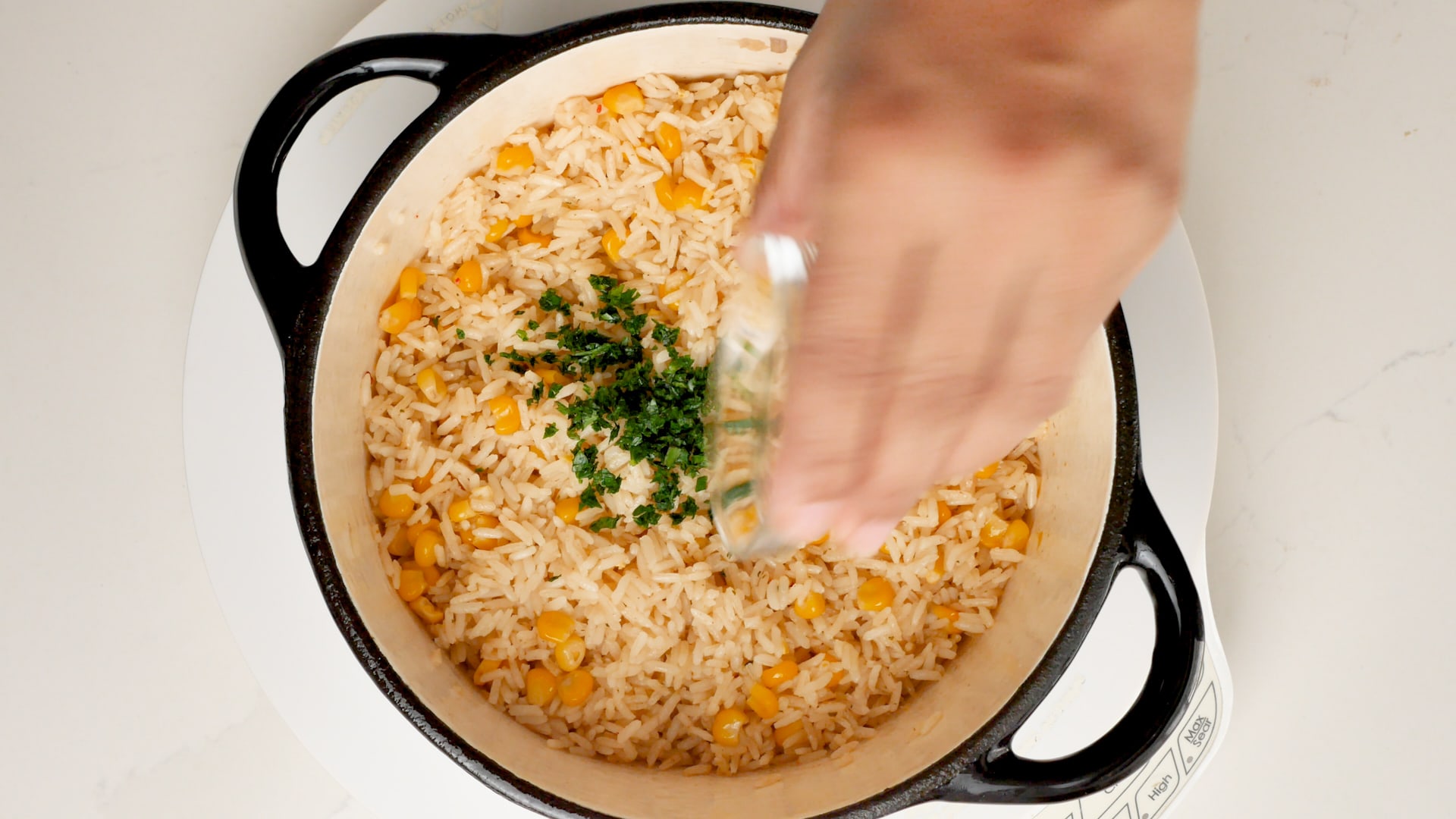 Uncover, add the remaining oil, and stir. Mix in the parsley and remove from the heat.
Uncover, add the remaining oil, and stir. Mix in the parsley and remove from the heat.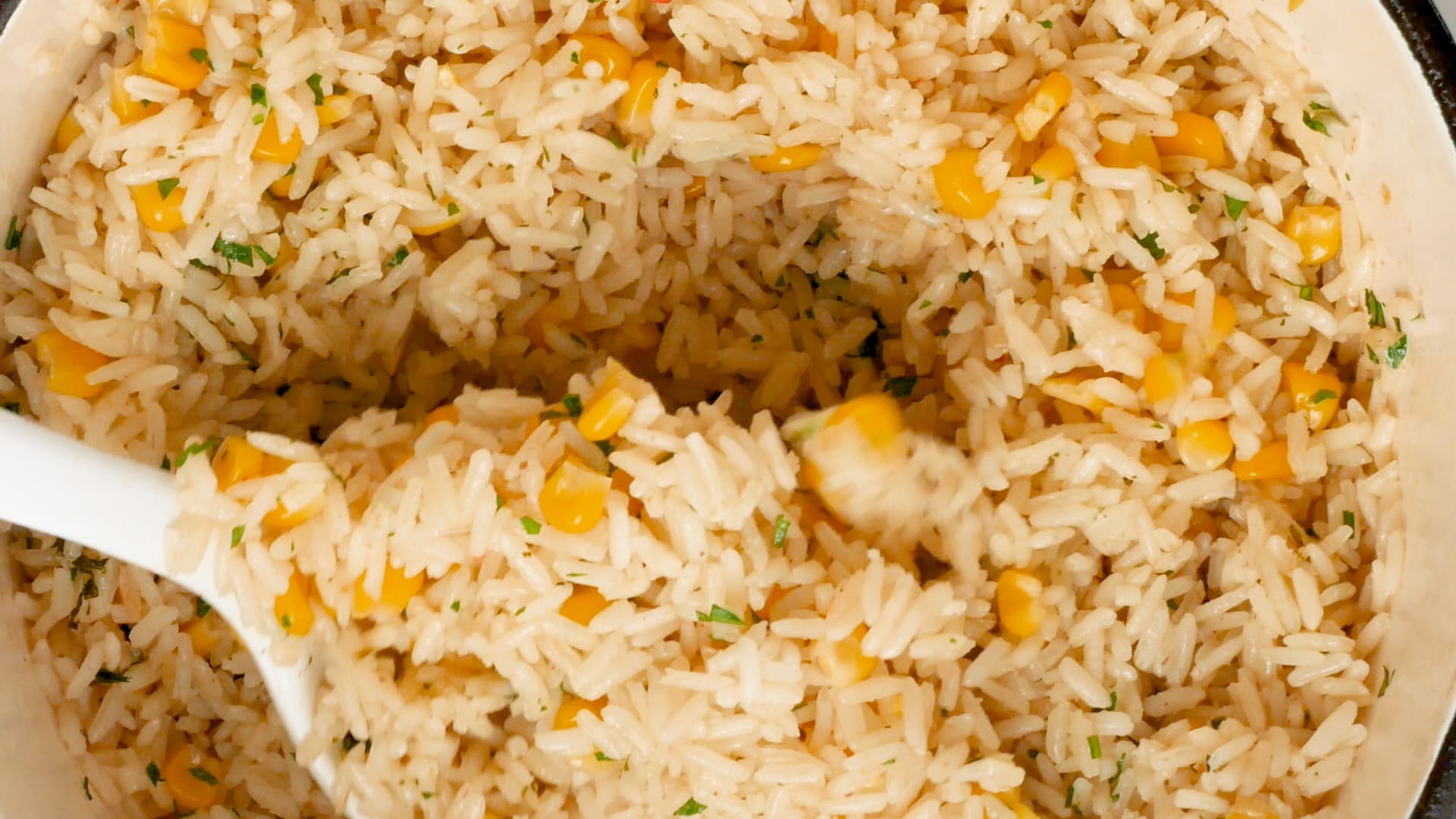 After removing it from the heat, scoop the rice right away into a serving bowl. Scrape the rice at the bottom (concón) and serve alongside as a special treat. See above the recipe for serving suggestions.
After removing it from the heat, scoop the rice right away into a serving bowl. Scrape the rice at the bottom (concón) and serve alongside as a special treat. See above the recipe for serving suggestions.
Video
Tips and Notes
Nutrition
Nutritional information is calculated automatically based on ingredients listed. Please consult your doctor if you need precise nutritional information.
References
- Mari's Cakes: Moro de maíz
- Amanda Ornes de Perelló, Cocina Criolla. Sto. Dgo.: Ed. del Caribe, 1962. Pag. 231
Published Feb 15, 2011, and last revised




